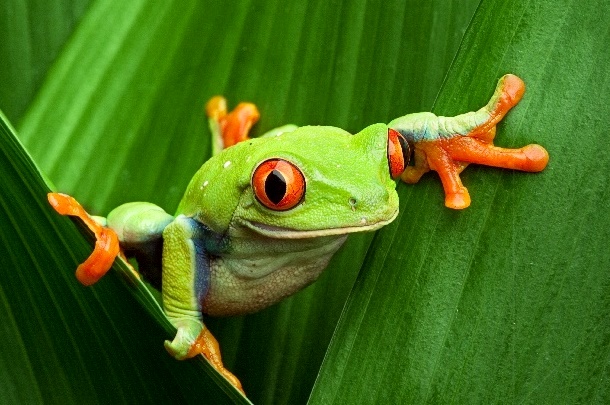Collectively, members of the class Amphibia are facing massive reductions in total numbers, and the overall biodiversity of amphibians across the globe is under threat. Scientists have determined that global climate change and habitat destruction are two chief factors responsible for some of the decreases observed in amphibian populations. However, another prime culprit has been discovered—specifically, chytridiomycosis. Chytridiomycosis is a disease caused by the waterborne fungal pathogen Batrachochytrium dendrobatidis (abbreviated as Bd). Since the 1980s, scientists have linked the chytrid fungus to the significant loss of much amphibian biodiversity in many locations around the world. More than 500 amphibian species have suffered total number losses as a result of chytridiomycosis, with at least 90 of these species becoming extinct. In addition, 124 species have suffered a 90% reduction in their populations, endangering their continued existence. Although all amphibian species are thought to be susceptible to chytridiomycosis, frogs and toads (order Anura) have been affected to the greatest degree. See also: Amphibia; Anura; Biodiversity; Endangered species; Extinction; Fungi; Global climate change; Mycology; Origins of modern amphibians

The chytrid pathogen has a particularly deleterious effect on the skin of amphibians. Amphibians infected by the fungus sustain a severe thickening (hyperkeratosis) of the skin that hinders their capability for water hydration, respiration, and salt adsorption, leading to heart failure and death within a few weeks. The pathogenic strains of the chytrid fungus originated in Asia in the 1980s, when one lineage hybridized with another lineage and became more virulent. However, as a result of a growing global pet trade of live amphibians, which rose significantly at the same time in the 1980s, the chytrid fungus spread rapidly throughout the world. With no means to prevent chytridiomycosis in the wild, this disease continues to affect additional amphibian populations. Areas with the most pronounced decreases in amphibian numbers are Central America (including various islands in the Caribbean), South America, and tropical regions in Australia. Populations in North America, Europe, and Africa have experienced drastic declines as well. See also: Fungal ecology; Fungal zoospores in aquatic ecosystems; Pathogen; Skin; Virulence
Wildlife monitoring is one key biosecurity measure to prevent the spread of the chytrid pathogen, as well as other pathogens. Preventing the spread of invasive species—especially of amphibian species that have been traded illegally and that are likely to carry pathogenic organisms—is another important step to minimize the effects of chytridiomycosis. Still, experts have declared Batrachochytrium dendrobatidis to be the most destructive pathogen for biodiversity ever recorded. Thus, its elimination will be an uphill battle. See also: Conservation of species; Invasion ecology; Invasive species





